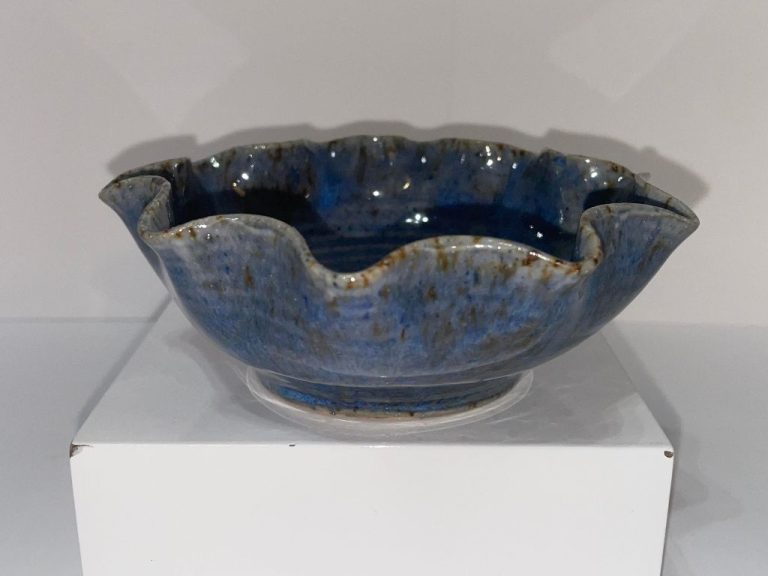How Do You Increase The Porosity Of Clay Soil?
Clay soil is defined by its small particle size and high density. The small particles fit tightly together, creating a dense and compact soil structure with limited space for air and water movement. This results in poor drainage and restricted root growth for plants. Porosity refers to the gaps and voids between the soil particles that allow for the movement of air and water. Healthy soils typically have around 50% porosity. However, clay soils often suffer from low porosity under 20%, which causes problems.
Problems with Compacted Clay Soil
Clay soil is notorious for its poor drainage and compacted nature. When clay soil becomes compressed, whether from heavy machinery, foot traffic, or natural settling over time, large air pockets are squeezed out from between the tiny clay particles. This results in a dense, almost concrete-like ground that water has trouble permeating.
With nowhere for the water to drain, puddles and ponding can occur after rain or irrigation. The excess moisture prevents air circulation to plant roots, leading to root rot and poor nutrient uptake. Oxygen is also sparse in saturated soil, inhibiting beneficial microbial activity.
In addition to poor drainage, compacted clay forms a physical barrier that resists root growth and penetration. Plant roots need to spread out to access nutrients and water. But in dense clay, they can become confined shallowly near the surface.
Test Soil Porosity
A simple and effective way to test your soil’s porosity is by doing a jar test. This involves taking a representative soil sample, putting it in a jar with water, shaking vigorously, and allowing it to settle for 1-2 hours. Here’s how to do a jar test:
- Take a shovel and dig 8-10 inches deep in multiple areas of your yard where clay soil is present. Collect these samples and mix together in a bucket to create a representative sample.
- Fill a quart sized glass jar about 1/3 of the way with the soil sample.
- Fill the remaining 2/3 of the jar with water and put the lid on tightly.
- Vigorously shake the jar for 2-3 minutes to break up soil aggregates and saturate the sample with water.
- Set the jar down and allow the soil to settle for 1-2 hours undisturbed.
Once settled, the ratio of soil to water will provide an indication of porosity. Soil with good porosity will settle into 1/3 of the jar, leaving 2/3 filled with water. Poor porous clay soils may occupy 1/2 or more of the jar space after settling, leaving less room for water.
Using this simple jar test periodically will help monitor if efforts to increase soil porosity are working. Target having at least 1/3 soil and 2/3 water after shaking and settling.
Add Organic Matter
One of the most effective ways to increase soil porosity in clay is to add organic matter. Organic matter includes materials like compost, manure, leaves, grass clippings and wood chips. As these materials decompose, they create tiny air pockets in the soil that improve drainage and oxygen flow.
Compost is an excellent choice for amending clay soil. You can create your own compost at home by combining plant-based kitchen scraps and yard waste. Allow this mixture to decompose for 2-3 months until it forms a dark, crumbly, earthy-smelling material. Mix compost into clay soil at a ratio of 1 inch of compost for every 8 inches of soil. The ideal time to add compost is in early spring or fall.
Manure from cows, horses, chickens, rabbits and other livestock can also enhance porousness in compacted clay. Make sure manure has been aged at least 6 months before using in your garden, as fresh manure can damage plants. Incorporate manure in a 2-4 inch layer on top of clay soil in the spring and fall. Over time, the manure will work its way down into the soil.
Aerate the Soil
One of the most effective ways to increase porosity in compacted clay soil is to aerate it. This involves punching holes into the ground using an aeration machine or tool. Core aerators use hollow tines to remove plugs of soil, leaving behind holes that allow air, water and nutrients to better penetrate the soil. The machines can aerate to depths of 6-10 inches, alleviating compaction in the top layers where plant roots grow.
A core aerator is a worthwhile investment for gardens and lawns with chronically compacted clay soil. They can be rented at most hardware stores and landscape centers if purchasing one is not feasible. Aeration should be performed in early spring or fall when the soil is moist but not overly wet. Make several passes across the area, a week or two apart, to thoroughly punch holes every 4-6 inches. Over time, the holes close up but the soil structure remains loosened. Aeration may need to be performed annually in landscapes prone to compaction. The increased porosity benefits soil health as well as plant root growth.
Mulch
Adding organic mulch on top of your clay soil is an effective way to increase porosity over time. As the mulch decomposes, it adds organic matter into the soil which helps create spaces for air and water. There are several types of organic mulch you can use:
-
Wood chips or shredded bark – These larger pieces take longer to break down but are very effective for improving drainage and aeration.
-
Compost – Finely decomposed organic matter adds nutrients and opens up clay soils. Aim for compost made from yard waste, not manure.
-
Straw or hay – Cheap and readily available organic mulches that break down more quickly. Make sure they are free of weed seeds.
-
Leaves – Leaf litter makes an excellent mulch. Shred leaves with a mower to help them break down faster.
-
Newspaper or cardboard – These can be used in layers under other organic mulches to suppress weeds.
Apply 2-4 inches of organic mulch around your plants. Replenish as needed. Over time, the mulch will improve soil texture and porosity.
Grow Deep-Rooted Plants
One of the most effective ways to increase soil porosity over time is to grow deep-rooted plants. As the roots of these plants extend down into the soil, they create channels and pathways for air, water and nutrients to move through the soil. This improves drainage and oxygen flow.
Some great deep-rooted plants to try include:
- Daikon radish – This fast growing radish can have taproots that extend 2-3 feet deep. As the roots decompose, they leave behind deep channels in the soil.
- Chicory – The long taproot on chicory can help break up compacted soils.
- Yarrow – The fibrous roots of yarrow help improve soil structure and drainage.
- Alfalfa – The deep taproot on alfalfa can extend up to 30 feet down, dramatically improving soil porosity.
Focus on planting these and other deep-rooted plants on areas of your property with compacted clay soil. Over time, the extensive root systems of these plants will help create a more porous, aerated soil environment.
Minimize Soil Compaction
Compacted soil significantly reduces porosity and the ability for air and water to infiltrate. Avoid driving heavy machinery over the soil, as the pressure can compress soil particles together into a dense mass. Restrict foot traffic in garden beds, and never work wet soil as it is more prone to compaction. When needed, use boards to walk over beds rather than directly on the soil. Incorporate cover crops or mulch to protect soil from the impact of rain. Overall, limit activities that apply excess weight and pressure to the soil.
Consider Soil Amendments
Adding certain soil amendments can help improve the porosity of compacted clay soils. Some potential amendments to consider include:
Gypsum
Gypsum is a mineral that can help improve soil structure. It contains calcium and sulfur, which bind to clay particles and cause them to cluster together into larger granules. This creates more pore space between the granules for air and water movement.
Apply gypsum at a rate of 1-2 lbs per 100 sq ft. It’s best to apply it in the fall so winter freezes and thaws can work it into the soil. Gypsum needs to be mixed in thoroughly to be effective.
Sand
Mixing sand into clay soil creates larger spaces between soil particles. This increases porosity and drainage. Use a coarse builder’s sand, not fine beach sand. Mix in up to 20% sand by volume into the top 6-8 inches of soil.
Too much sand can negatively impact the soil, so it’s best to add smaller amounts over time. Also amend with organic matter when adding sand to help retain nutrients.
Biochar
Biochar is charcoal used as a soil amendment. It has a highly porous structure that creates space in the soil and improves drainage. It also helps bind nutrients and provides habitat for beneficial microbes.
Use biochar that has been pre-charged with nutrients. Mix it into the top few inches of soil at a rate of about 1-2 lbs per 100 sq ft. Over time it will break down and add organic matter.
Test and Monitor Porosity
After taking steps to increase soil porosity, it’s important to test and monitor your progress. A simple method is to do a repeat jar test. Take a sample of your soil and place it in a jar with water. Shake vigorously to mix it up. Allow the soil to settle and observe the drainage. Healthy porous soil will leave about 50% air space at the top after 2 hours. Compacted clay soil will leave little to no air space. Compare your results to previous jar tests to see improvement over time.
You can also monitor porosity by digging a hole and observing the soil structure. Look for visible air pockets between soil aggregates. Use a shovel to slice into the soil and check that water drains freely without pooling on the surface or taking more than 2 days to drain.
Testing and monitoring porosity allows you to assess how effective your improvement methods have been. Continue amending soil and adjusting your approach until you reach an optimal level of drainage and aeration for plant roots.




